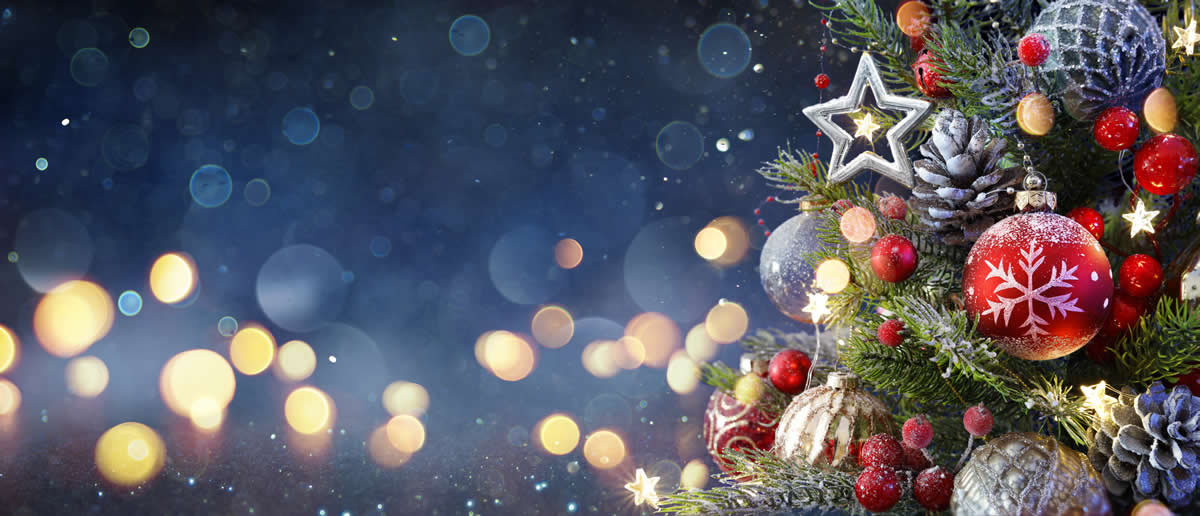Once you’ve decided to have a Christmas tree, the first thing you must decide is whether to buy a natural tree or an artificial one.
In purely environmental terms, natural is by far the most responsible choice – The CarbonTrust has this to say:
“A real pine or fir tree naturally absorbs CO2 and releases oxygen. The Carbon Trust estimates that a 2-metre artificial tree has a carbon footprint around 40kg CO2e: more than ten times that of real trees that are burnt”.
In the UK it’s relatively easy to recycle your old tree (rather than burning it) so the savings in terms of the carbon footprint are even greater.
Natural Christmas trees provide homes for all sorts of wildlife as well as removing pollutants, dust and pollen from the air.
In addition to the environmental reasons, there’s another benefit to choosing a natural tree.
In 2004 a study was conducted of the nation’s favourite smells. It revealed the smell of a Traditional Christmas Tree to be the 8th favourite; one place before the smell of perfume and just behind the smell of the sea!
In the UK the ratio of people who use a real tree compared to an artificial one is about 50/50.
Where can I buy a real Christmas tree in Sussex?
There are a couple of convenient options for those of us living in the Sussex area:
1. Sussex Trees – On the website, you’ll find a couple of different farms to choose from. Either Goddenwick Farm in Lindfield, West Sussex (opening times are 28th November – 22nd December, 8.30am – 5pm) or Northdown Christmas Tree Plantation, Five Ashes, East Sussex (opening times are 28th November – 22nd December, 8.30am – 5pm).
2. Pick your own Christmas tree – This is a really useful site providing a range of locations in both East and West Sussex so you’re bound to be able to fin one that’s not too far from you.
How many people have a real vs. fake tree?
The British Christmas Tree Growers’ Association estimate that about 1/3 of households have a traditional tree, 1/3 have an artificial tree and the remaining 1/3 have no tree at all.
|
Did you know? One acre (4047 sq metres) of growing Christmas trees provides enough oxygen for the daily requirements of 18 people. The earliest reference in print relating to Christmas trees appeared in 1531 in Germany. The first documented accounts of decorated Christmas Trees being used for a Christmas celebration was in 1510, in Latvia and Estonia. |
Buying natural trees also helps local small businesses in your area and of course, the economy benefits from employment opportunities that local businesses can bring to the community. When you also consider that most artificial trees are produced in China and the huge carbon footprint involved in sending them to the West, there really isn’t much of a decision when it comes to helping the environment.
So how do you go about disposing of your tree once the Christmas season is over?
|
Factoid The traditional day to take down Christmas decorations is the 6th of January, the twelfth day of Christmas. Leaving them up after this day is traditionally viewed as bringing bad luck to the homestead. Twelfth Night is defined by the Oxford English Dictionary as: “the evening of the fifth of January, preceding Twelfth Day, the eve of the Epiphany, formerly the last day of the Christmas festivities and observed as a time of merrymaking.” So commoners were allowed 12 days of Merrymaking – after this, all decorations were removed to symbolise that the party was over! |
Most local authorities will pick up your tree along with their normal garden waste collections. If you have a particularly big tree, with a trunk diameter of more than 2 inches, you may have to take it your local recycling centre yourself.
Not all local authorities services are the same so please check their website if you are unsure of the arrangements in your area.
In many cases, you can also return your tree to the business you bought it from who will happily shred/chip it for you.
Martyn Jeynes, waste and street scene manager for Maidstone Borough Council, in an interview with Kent Online, said:
“Once you’ve finished with your tree and you’ve taken all of the decorations off, you can put them in your garden waste bin. It’s important that the natural trees are not put into landfill, and that we recycle them.”
Once collected by or delivered to your local recycling centre your tree will be chipped down and composted. It’s therefore entirely possible that the fertiliser produced from your old tree will end up being used to help grow your new one!
